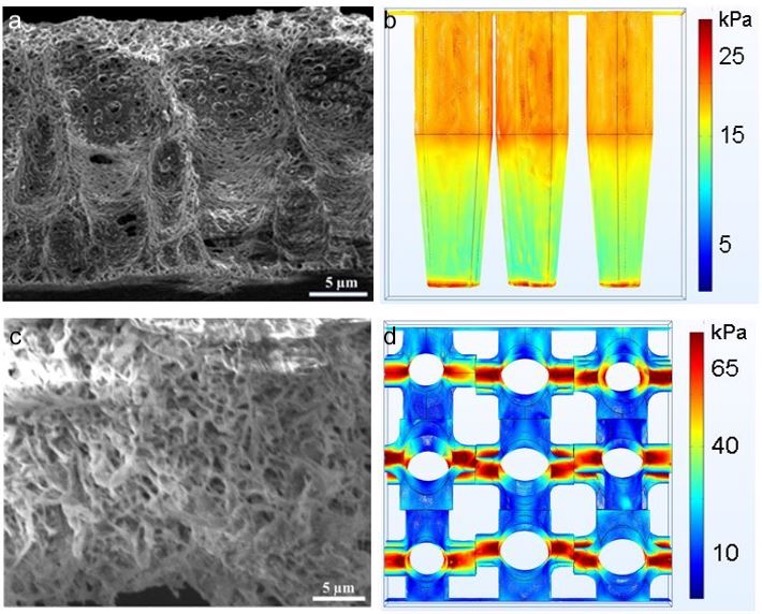Power availability remains one of the central limiting factors for the implementation of wireless sensors in many applications. The ability to harvest energy directly from the environment to power wireless sensor systems, making them completely energy independent, could enable many applications with wide ranging societal benefits. To improve the energy independence of electronic devices, there is great interest in powering devices from wasted environmental energy using energy harvesting technologies, however many self-powered devices that utilize energy harvesting still require an energy storage mechanism due to intermittent energy availability. This project is developing new technologies that can harvest power from ambient thermal energy, specifically small changes in temperature that occur daily all around us, and directly store that energy in a battery or supercapacitor. This technology could have wide-ranging applications enabling many smart environments with direct benefit to society.
The objective of this research is to explore a new approach for the direct conversion of thermal energy to stored electrochemical energy using a novel device called a “pyroelectrochemical cell” (PEC). The PEC uses a pyroelectric material (porous polyvinylidene fluoride, PVDF) as the separator of an electrochemical cell. When the PEC is heated (or cooled), the polarization of the pyroelectric separator decreases (or increases), producing a potential gradient that induces ion migration to charge the cell. The goal of this work is to fully explore and mathematically model this new technology such that it can be used to support self-powered sensing operation while minimizing device size, weight, and number of components. The project combines experimental and simulation-based approaches that seek to understand the fundamental mechanisms of ion and electron transport within the cell, and explore the efficiency limit of the thermal-to-electrochemical energy conversion.
Highlights:
- Advanced understanding of the effects of mechanical stretching on the polarization of barium titanate (BaTiO3, BT)-polyvinylidene fluoride (PVDF) composite piezo-active films.
- Determined the impact of film morphology on piezoelectric performance of porous BT-PVDF films, including identifying optimum fabrication conditions to maximize porosity and piezoelectric voltage response.
- Designed and constructed two new spectroelectrochemical cell configurations that enable in-situ UV-Vis spectroscopy measurements of electrochemical cells with rapid heating capabilities (1 deg C/s).
- First exploration of integrated pyroelectric energy harvesting and electrochemical energy storage within a single device (ongoing).
Publications:
- Timothy Kowalchik, Fariha Khan, Katrina Le, Paige Leland, Shad Roundy, and Roseanne Warren, “Effect of pore structure on the piezoelectric properties of barium titanate-polyvinylidene fluoride composite films,” Under review.
- Fariha Khan, Tim Kowalchik, Tanner Nelson, Aaron Atnip, Johnathon Johnson, Jeremiah Young, Connor Siri, Adam Dallon, and Roseanne Warren, “Communication–Design of Heated Cells for In-situ Absorption and Reflectance UV-Vis Spectroelectrochemistry,” Journal of The Electrochemical Society, Vol. 169, pp.066502, 2022. link
- Fariha Khan, Timothy Kowalchik, Shad Roundy, and Roseanne Warren, “Stretching-induced phase transitions in barium titanate-poly(vinylidene fluoride) flexible composite piezoelectric films,” Scripta Materialia, Vol. 193, pp. 64-70, 2021. link
Presentations:
- Tim Kowalchik, Fariha Khan, Shad Roundy, and Roseanne Warren, “Direct Thermal-to-Electrochemical Energy Conversion via a Pyroelectrochemical Cell,” Proceedings of the 21st International Conference on Micro and Nanotechnology for Power Generation and Energy Conversion Applications (PowerMEMS 2022), Salt Lake City, UT, USA, December 2022 (Oral Presentation).
- Tanner Nelson, Aaron Atnip, Johnathon Johnson, Jeremiah Young, Connor Siri, Adam Dallon, Fariha Khan, Timothy Kowalchik, and Roseanne Warren, “Design of a Spectroelectrochemical Cell with Rapid Heating and Temperature Control for Battery Applications,” Proceedings of the 239th ECS Meeting, Online meeting, May 2021 (Oral presentation).
- Paige Leland, Katrina Le, Roseanne Warren, Shad Roundy, “Optimizing Piezoelectric Process Parameters for Self-Charging Power Cells,” Proceedings of the National Council on Undergraduate Research, Online meeting, April 2021 (Oral presentation).
Funding: This research is sponsored by NSF Award #1936636: Pyroelectrochemical Cell: Enabling Intelligent Self-Powered Systems via Direct Conversion of Thermal Energy to Stored Electrochemical Energy.

Improving the piezo-activity of BaTiO3-PVDF composite films via uniaxial stretching. a) Conceptual illustration of the composite structure before and after stretching, including conversion of α and γ phase PVDF to β phase. SEM images of a BaTiO3-PVDF composite film (10 wt%) before (b) and after (c) stretching.

Effect of pore structure on mechanical stress transfer to BaTiO3 particles embedded in a porous PVDF polymer matrix.
a) SEM image of BaTiO3-PVDF porous film with finger-like pore structures created by coagulation bath method (DI water bath)
b) Finite element simulations (COMSOL Multiphysics) of finger-like pore structures showing a surface contour plot of von Mises stresses in the finger-like PVDF film cross-section.
c) SEM image of BaTiO3-PVDF porous film with mesh-like pore structures created by coagulation bath method (DI water + 45% ethanol).
d) Finite element simulations (COMSOL Multiphysics) of finger-like pore structures showing a surface contour plot of von Mises stresses in the mesh-like PVDF film cross-section.
Cuvette (left) and disk (right) spectroelectrochemistry cells enabling rapid heating (1 deg C/s) of electrodes, electrolyte, and separator during in-situ UV-Vis electrochemical measurements. Air-tight sealing enables use of cell designs with oxygen- and moisture-sensitive electrolytes.


